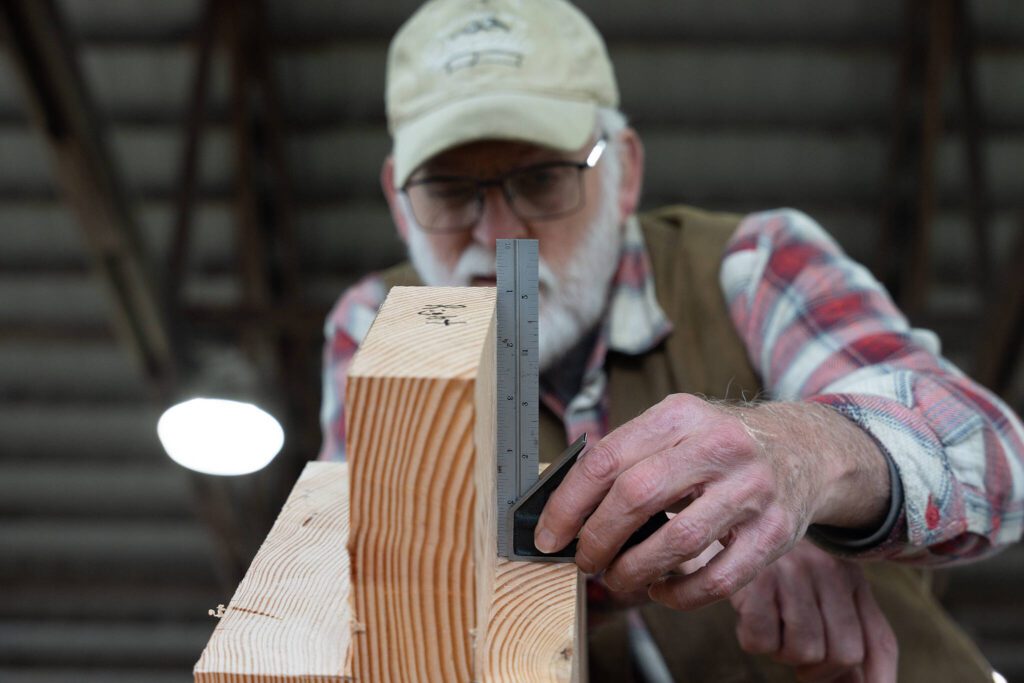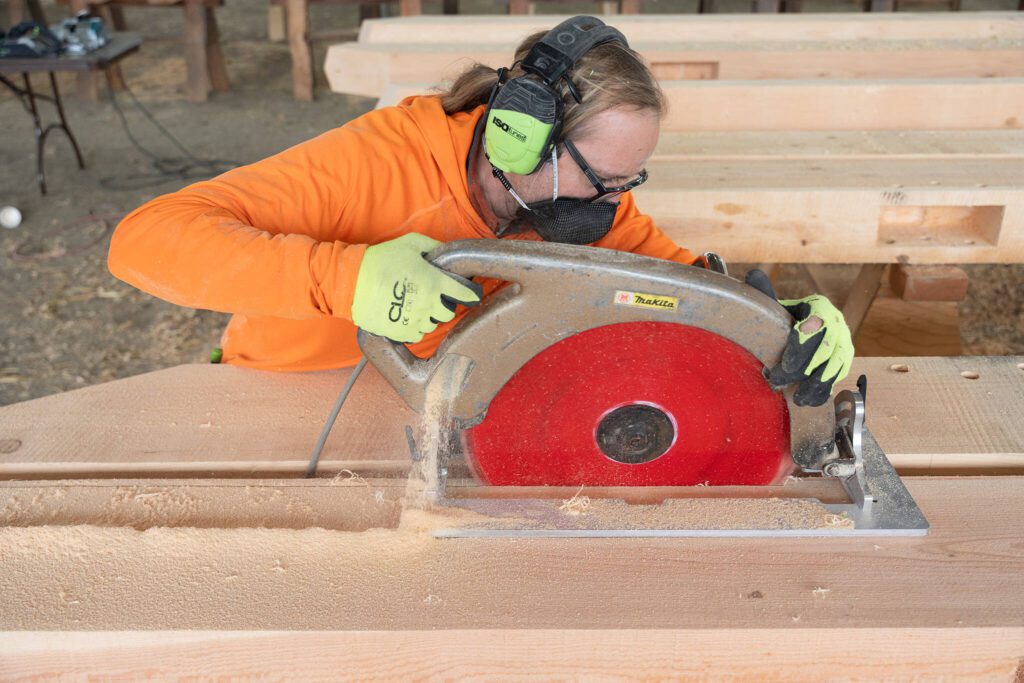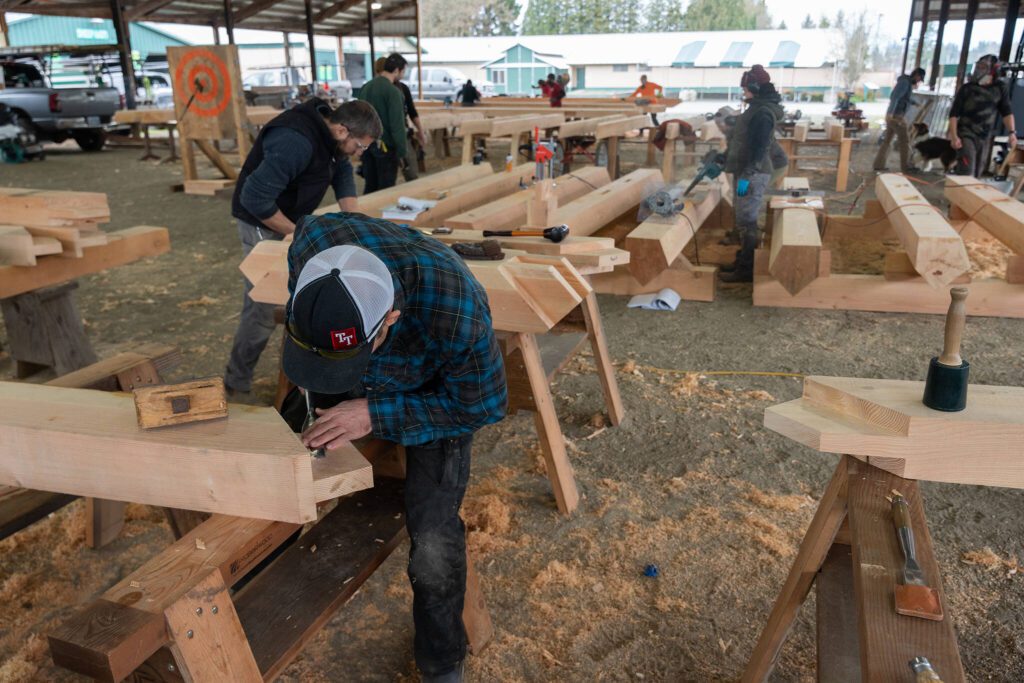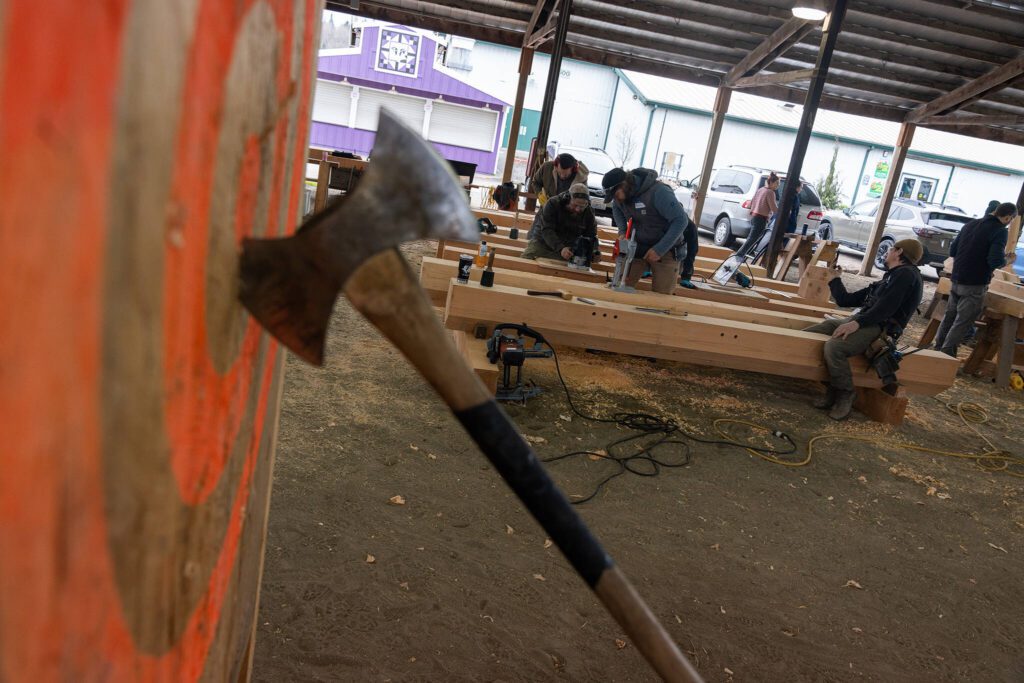MONROE — Under the roof of an empty judging arena at the state fairgrounds, the scent of pine wafted through air filled with the droning sounds of power tools.
The people milling about logs and piles of wood shavings were from all over the country. They’re part of the Timber Framers Guild, a nonprofit volunteer organization partnering with Snohomish County Parks to use salvaged timber from the bomb cyclone to build a new shelter and community gathering space at Flowing Lake Park.
The guild was established in 1988 and works with nonprofits and municipalities to create community structures while also providing education on timber framing — a traditional technique using heavy timber secured with wooden pegs.
The timber being used to create the structure for Flowing Lake Park was collected from Lake Roesiger Park after the bomb cyclone in November, which killed two people and caused more than $23 million in damage, according to county officials.
The collected wood traveled less than 20 miles for the project, county parks spokesperson Rose Intveld wrote in an email.
“This is a very cool, unique organization,” she said Wednesday while at the fairgrounds. “Especially with government, using taxpayer dollars the best we can — this amazing partnership, with volunteers, we really value that.”
The volunteers at the Flowing Lake Park project range from professionals to apprentices to people who just got hooked on learning the timber framing trade and giving back to communities.
Elaina Jorgensen lives in Seattle, and her first project with the guild was the Oso Landslide Memorial project, where volunteers created four pavilions on either side area.
“I started, honestly, because I wanted to gain the skills. But then after I did Oso and seeing how impactful the work was to the community, I really wanted to do it more for the community,” she said. “It’s been cool to have that personal growth.”
In the summer of 2024, Jorgensen was promoted to chief of staff for the National Oceanic and Atmospheric Administration’s Alaska Fisheries Science Center. But last month she was laid off with thousands of other federal workers as a result of some of President Trump’s executive orders and the Department of Government Efficiency.
As soon as the announcement about the impending federal worker layoffs came out, Jorgensen said she knew if she was laid off she’d want to be a part of the upcoming guild project.
“I wasn’t expecting getting fired, but it was so great to have these people, many people I have volunteered with at least two or three times, and to be here and have this community who were really supportive,” she said.
A big draw to becoming a part of the guild and volunteering on community projects is getting hands-on, free experience. Each project has a manager, as well as a handful of instructors who help guide and teach less-experienced tradespeople.
“It’s a really nice mix of fun, hard work, education, contribution,” said Jim DeSantis, project manager and guild board of directors member. “The traditional barn-raising idea is a pretty powerful metaphor — communities helping each other and so on. I think that really speaks to a lot of people.”
The guild’ newsletter shares upcoming community projects and other ways to get involved. The organization also has a trade school in New Hampshire with courses and apprenticeships as well as a quarterly technical magazine covering timber framing history, technology, theory and practice.
Eliza Aronson: 425-339-3434; eliza.aronson@heraldnet.com; X: @ElizaAronson.
Eliza’s stories are supported by the Herald’s Environmental and Climate Reporting Fund.
Talk to us
> Give us your news tips.
> Send us a letter to the editor.
> More Herald contact information.































